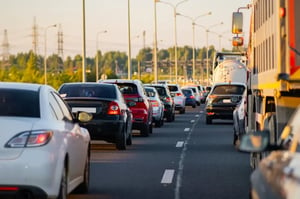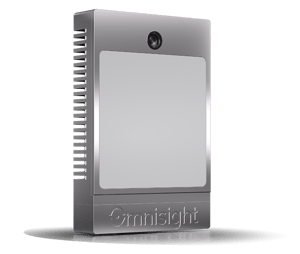
Traffic Studies
Traffic Studies Shape Safer, Smarter Roads
Did you know that inefficient traffic flow costs the U.S. economy billions in lost productivity every year? With congestion on the rise, city planners, government agencies, engineering firms, and consultants rely on traffic studies to understand traffic patterns and improve roadways, public transit, and traffic management systems.
Accurate, comprehensive data is the foundation of every traffic study—better data leads to smarter decisions on traffic signal timing, road design, and safety improvements.
Omnisight’s FusionSensor offers a new standard for traffic data collection. HD3D radar and AI-enabled cameras capture real-time insights into vehicle and pedestrian activity. These smart city traffic solutions equip urban areas across the United States with the tools to manage congestion and improve traffic flow effectively.
Traffic Studies Shape Safer, Smarter Roads
Did you know that inefficient traffic flow costs the U.S. economy billions in lost productivity every year? With congestion on the rise, city planners, government agencies, engineering firms, and consultants rely on traffic studies to understand traffic patterns and improve roadways, public transit, and traffic management systems.
Accurate, comprehensive data is the foundation of every traffic study—better data leads to smarter decisions on traffic signal timing, road design, and safety improvements.
Omnisight’s FusionSensor offers a new standard for traffic data collection. HD3D radar and AI-enabled cameras capture real-time insights into vehicle and pedestrian activity. These smart city traffic solutions equip urban areas across the United States with the tools to manage congestion and improve traffic flow effectively.
Why In-Depth Data is Necessary for Traffic Studies
Comprehensive traffic studies require more than just counting cars. A range of data points is necessary to understand traffic flow and identify areas for improvement.Vehicle Counts
Accurate vehicle counts form the foundation of any traffic study. Engineers need to know exactly how many vehicles pass through intersections or travel along specific corridors during different times of day. This data helps identify peak congestion periods and establish baseline metrics against which future traffic management solutions can be measured.
Vehicle Types and Classifications
Different vehicle types impact roadways differently. Trucks, buses, and passenger cars have unique effects on traffic flow, emissions, and infrastructure wear. Classifying vehicles accurately can help traffic engineers design intelligent transportation systems that accommodate the actual mix of traffic using a particular route.
Average Vehicle Speeds
Speed data can reveal how effectively traffic is moving through the system. Consistently low speeds indicate congestion points where optimizing traffic flow should be prioritized. Speed variations can identify dangerous road segments where improving safety measures may be necessary.
Pedestrian Counts
A traffic study must account for all road users, not just vehicles. Pedestrian movement patterns influence crosswalk timing, sidewalk design, and public transit stop placement. Understanding pedestrian volumes helps create balanced transportation networks that serve all community members safely and efficiently.
Lane Usage on Multi-Lane Roads
Traffic doesn’t distribute evenly across available lanes. Some lanes carry higher volumes, creating bottlenecks and merge conflicts. Lane usage data helps engineers identify opportunities to balance traffic through lane assignments, signage improvements, or adaptive traffic systems that respond to changing conditions.
Parking Lot Occupancy Rates
Parking availability impacts city traffic as drivers circulate, looking for spaces. Monitoring parking occupancy helps planners determine if current facilities meet demand or if additional parking infrastructure is needed. This data also supports dynamic parking guidance systems that direct drivers to available spaces, reducing unnecessary travel time.
How the Omnisight FusionSensor Supports Traffic Studies
Traditional data collection tools often struggle to keep up with the complexities of modern traffic patterns. Omnisight combines HD3D radar with AI-enabled cameras to deliver accurate, real-time insights, even in challenging weather conditions.
- High-frequency data collection. The FusionSensor collects data 20 times per second, providing a detailed view of fast-changing traffic conditions. Whether monitoring rush hour or studying special event traffic, this high-frequency data captures the whole picture.
- Immediate data processing. Thanks to TrueEdge technology, data is processed at the sensor level. When the radar and cameras capture information, the sensor interprets it —classifying vehicles, counting pedestrians, and organizing data before reaching a server.
- Low power consumption. The FusionSensor is energy-efficient and cost-effective, running on just 15 watts. It can operate continuously over long periods without rising energy costs, making it ideal for short-term studies and long-term observation projects.
- Seamless database integration. Compatibility is key for effective traffic studies. The FusionSensor outputs data in widely used formats, ensuring easy integration with existing traffic management systems. Researchers and planners can easily analyze the data using their preferred tools.

Optimize Your Traffic Studies With Omnisight
Accurate data is the backbone of effective traffic management. Traffic studies have relied on outdated methods that miss crucial details or require time-consuming processing for too long. Omnisight’s FusionSensor changes that by delivering fast, reliable data customized to the demands of today’s cities.
From managing traffic congestion to optimizing traffic signal controls, the FusionSensor equips city planners, transportation departments, and engineering firms with the insights needed to make better decisions.
If you’re ready to power your next traffic study with the most advanced technology available, schedule a free consultation with Omnisight.
